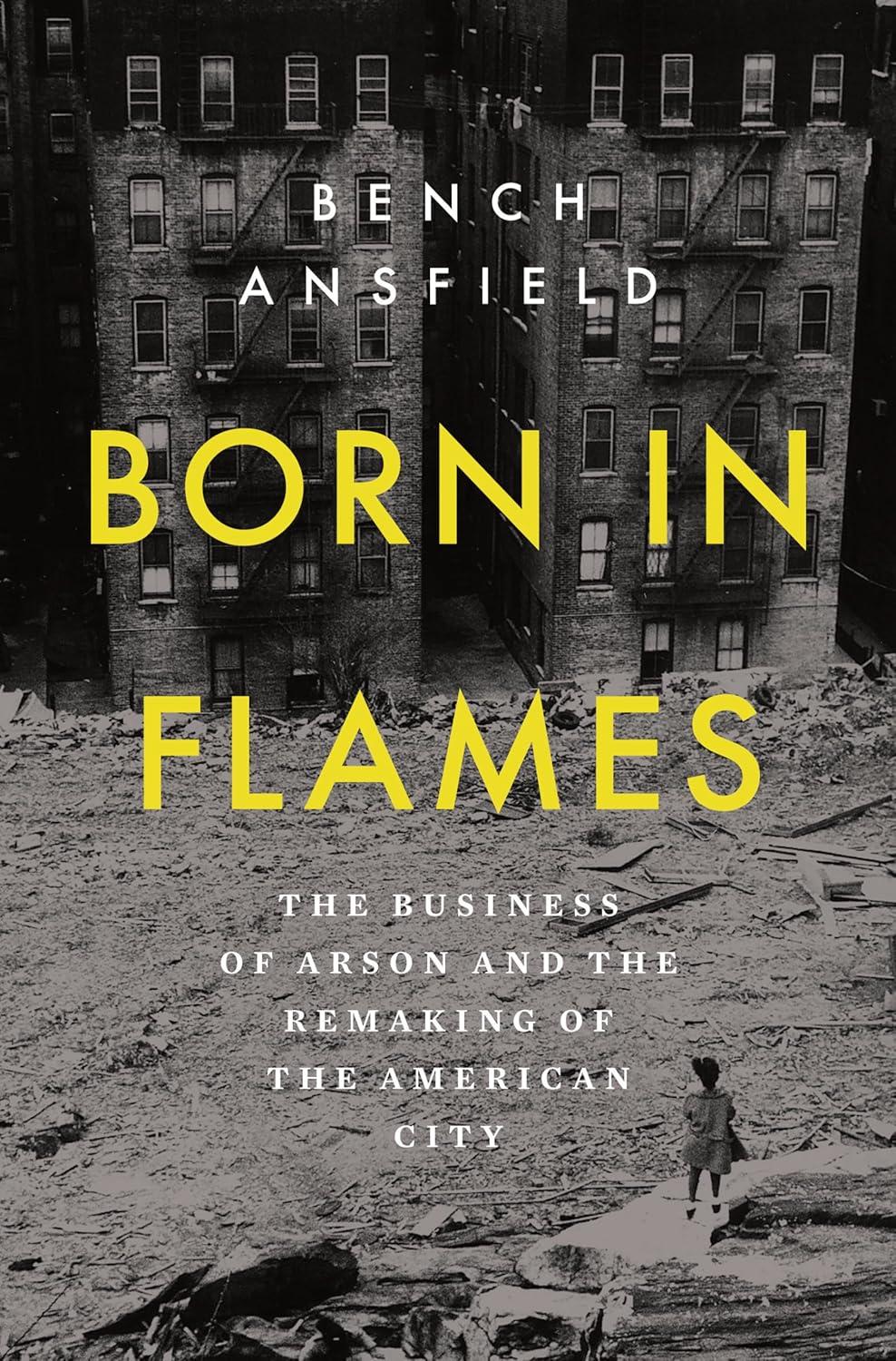These multicausal explanations soften the accusatory focus on landlords but pull the lives of tenants into sharper detail. As the South Bronx’s private-housing market collapsed, many owners compensated for lost rents by retracting services. Shivering, tenants used ovens and electric heaters for warmth, which, especially in buildings with old wiring, caused fires. As the deteriorating tenements emptied, the arson began. Landlords burned to get insurance, scavengers to access valuable metal, and tenants to escape the doomed buildings for safer, better-maintained, and subsidized public housing. Fire was contagious. Tenants expecting their homes to burn had reason to light the fires themselves, to control when they happened and thus protect their lives and property.
Michael Jacobson interviewed convicted New York arsonists for his dissertation. Some burned for pay, some not. What united them was their “highly stressful lives.” Most had quarrelled with someone right before the act. Unfortunately, fires, by ripping households and neighborhoods apart, only compounded the stress. And surely the more fires that raged, the easier it was to imagine using arson to rob apartments, hurt competitors, or get revenge. (The deadliest fire, at the Puerto Rican Social Club, was orchestrated by a man motivated by jealousy.) In the holocaust of the South Bronx, lighting a match could seem like just hastening the inevitable.
Emphasizing arson’s complex motives is no defense of the system. Even fires set by vandals were “shaped by a larger political economy which included banks, landlords, and insurance companies,” Jacobson writes. Still, the relation between finance and fire was often indirect. Poverty has the power to make perpetrators of its victims, and Bronxites feared their neighbors as well as their landlords.
The thread tangles at the other end, too. Ansfield describes “vast fortunes” made from insurance arson. Yet claims rarely exceeded thirty thousand dollars, and the Bronx’s swiftly depreciating tenements were generally owned by petty and mid-tier operators, not Tom Wolfe-style masters of the universe. Joe Bald, the leader of the arson ring, had been an interior decorator, a furniture dealer, and a rabbi.
There were fires that benefitted Wall Street. The historian Dylan Gottlieb has explained how Hoboken property owners torched hundreds of inhabited tenements and rooming houses to clear space for yuppies’ luxury apartments. The Bronx fires, however, were a drain on the financial élite. Insurance arson wasn’t the richest squeezing the poorest. It was hustlers—slumlords, corrupt brokers, tough guys, owners in dire straits—defrauding large corporations. The poor were collateral damage.
Racial-capitalism theorists, emphasizing systematicity, tend to see historical traumas as features, not bugs. They envisage a vast, extractive structure in which, as Walter Johnson writes, “white supremacy justified the terms of imperial dispossession and capitalist exploitation.” But the Bronx had high unemployment, low property values, and large welfare rolls. How much was there to extract? Bronxites were less exploited by capitalists than mauled by an unexpected combination of policies and incentives that few outsiders bothered to notice. Ansfield, surveying the borough’s devastation, deems it “the core of twentieth-century racial capitalism.” One might alternatively see it as capitalism’s no man’s land. Rather than being central to the system, the Bronx hardly mattered to it at all. Sometimes that’s worse.

